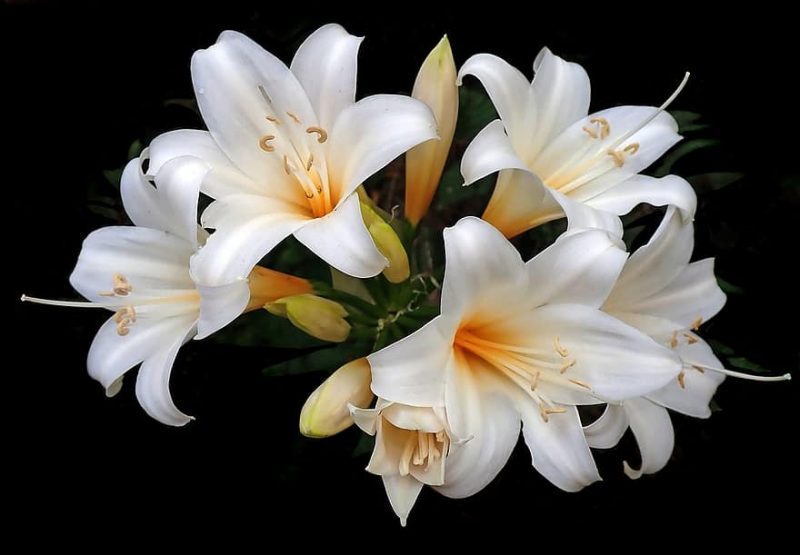Knowing how to plant Easter Lily can be rewarding, given the flowers’ attractive blooms and fresh scent, which have caught the admiration of many people.
During spring, you might get to encounter Easter Lilies a lot. Their pure natural fragrance and white trumpet-shaped blooms are used to symbolize a new beginning. It is one of the best ways to bring the season’s freshness to your home and garden.

The Proper Way of Cultivating Easter Lilies
Even when buying an Easter Lily from a garden shop, some factors must be considered. Look for the tall ones, preferably double the height of its container. The foliage should be tinted in deep green, and there must be no signs of disease or wilting.
Ideal conditions for growing Easter Lilies
As long as you don’t use heavy clay, any variation of garden soil can assist your Easter Lily in its growth. The ground must also be consistently moist. Therefore, utilize compost or even peat moss to achieve the ideal dampness of the soil.
You should water them and their surrounding soil without waiting for the plant to be completely dehydrated and visibly withered. However, do not overwater it either, since too much moisture may result in a bulb root.
It is recommended to provide shade for the soil and the Easter Lily’s roots as well. You can do this by adding mulch. Alternatively, surrounding them with shallow-rooted plants can help too.
Aside from the soil, some considerations must be followed for the location. Choose an area that can accommodate the probable maximum height of Easter Lilies, which is three feet. You can place it indoors or outdoors.
However, make sure that the location has access to the morning sun, as well as the afternoon shade. If indoors, place it beside or near a window that can give it enough light to support life, but not too much, and do not let the direct sun rays hit it either.
The ideal temperature for the planting area is within the 65 to 75 degrees F range. On the other hand, maintain around 55 to 60 degrees F during nighttime. Make sure that the temperature remains even, especially if you are growing them inside your house.
How to plant Easter Lily
Although Easter Lilies are usually grown during spring, do not plant as soon as the season starts. You first need to make sure that the temperature is not too cold. If they can survive on the colder days of the season, you can then enjoy them until fall ends.
Afterward, choose a location based on the ideal conditions mentioned beforehand. If other plants are surrounding it, there should at least be a 12 to 18 inches radius of space.
If you are transplanting them from a container to your outdoor garden, make sure that the depth is consistent, or at the very least, only a few inches lower than it was in the pot. Preferably, that would be roughly about three inches deep.
Remember to keep them hydrated and pruned as well. You can even incorporate fertilizers, especially when spring has just gotten started and the temperature is still a bit low. During such times, apply mulch to keep the bulbs safe from freezing.
However, you must keep in mind that you should not put too much mulch. A few inches should be enough. Also, avoid placing them near the stems but on the roots instead. Although they are beneficial, they can cause rotting.
Why Should You Plant Easter Lily in a Greenhouse?
Have you ever considered growing your plants inside a mini greenhouse? If you haven’t considered this option, here are some of the reasons why you should:
Grow more plants
A mini greenhouse allows you to grow more plants, even the ones that aren’t native to your region. You can alter the growing environment of your greenhouse to suit the plants you’re growing. The consistent heat and humidity enable you to plant warm-season plants at any time of the year – even exotic plants!
Extend growing season
One of the main advantages many gardeners love is that greenhouses can extend your plant’s growing season. You don’t need to worry about extreme temperature changes as the sun’s heat is trapped within the greenhouse, keeping your plants warm.
Protect your plants from bad weather
Bad weather can destroy even the strongest and well-kept outdoor garden. High winds, heavy rain, thunderstorms, and blizzard can damage your exposed plants. However, growing them in a greenhouse offers a layer of protection from inclement weather.
Protection from pests and larger animals
Another advantage of keeping your plants inside a greenhouse is that it stays safe from pests and larger animals that can destroy your plants. You can keep out deer, squirrels, moles, and other rodents. You can even increase your protection by setting traps and adding screens to your greenhouse.
Final Thoughts on How to Plant Easter Lily
In general, all you have to do is to follow the proper way on how to plant Easter Lily under the conditions where they grow best. Maintenance is also just as essential, so remember not to skip on that part.
